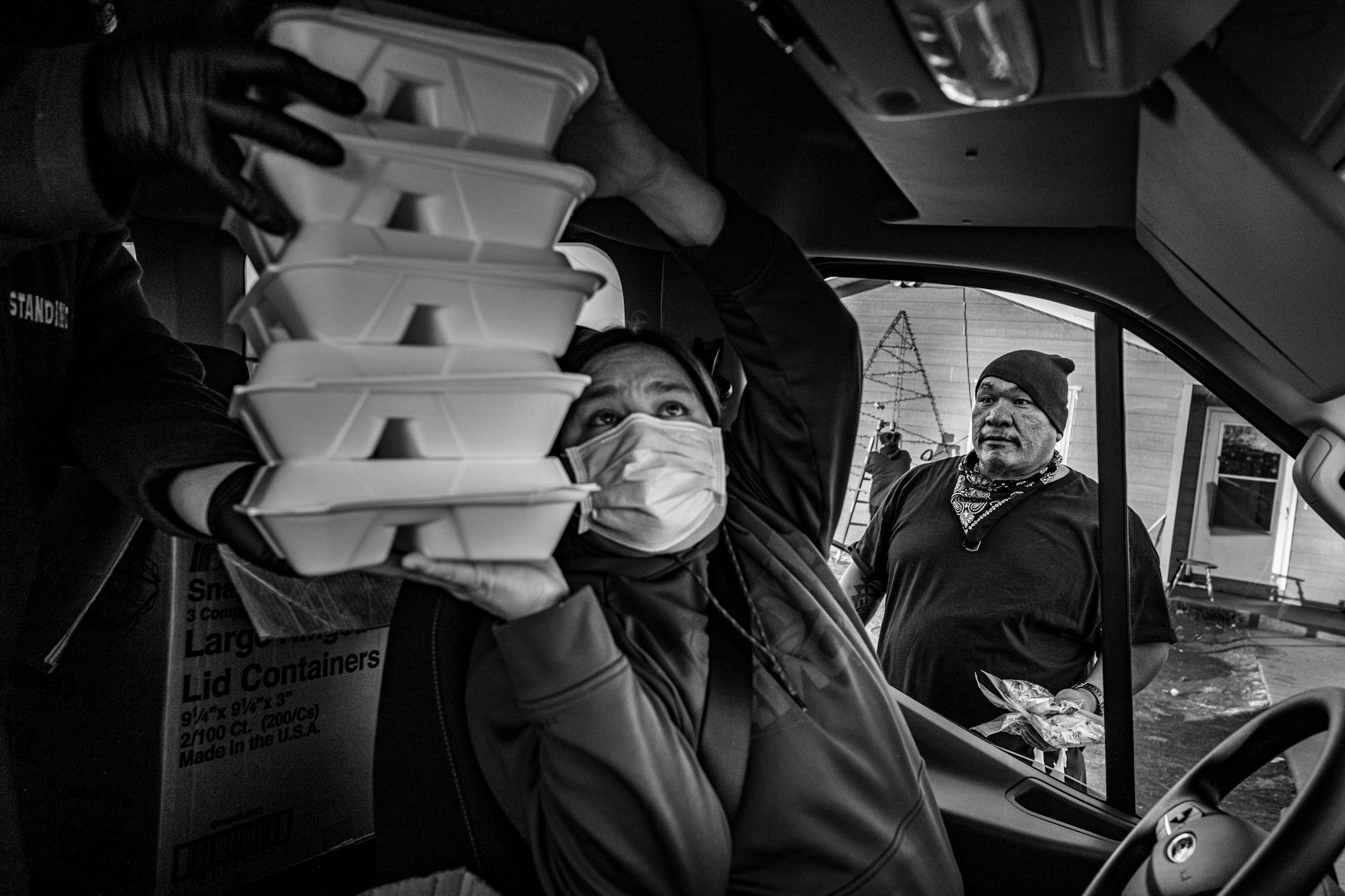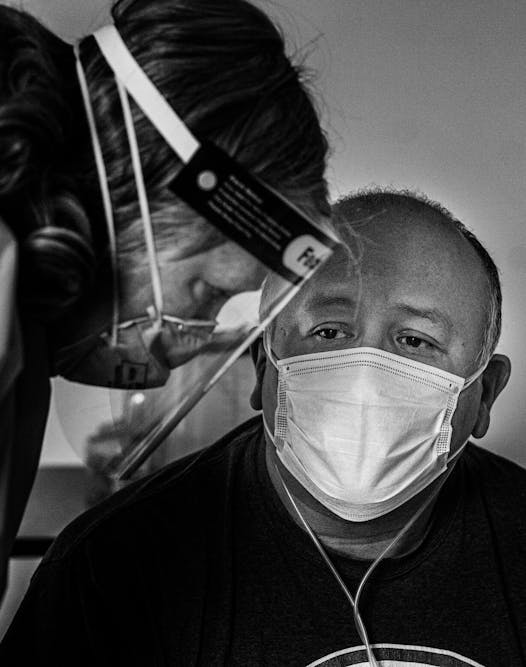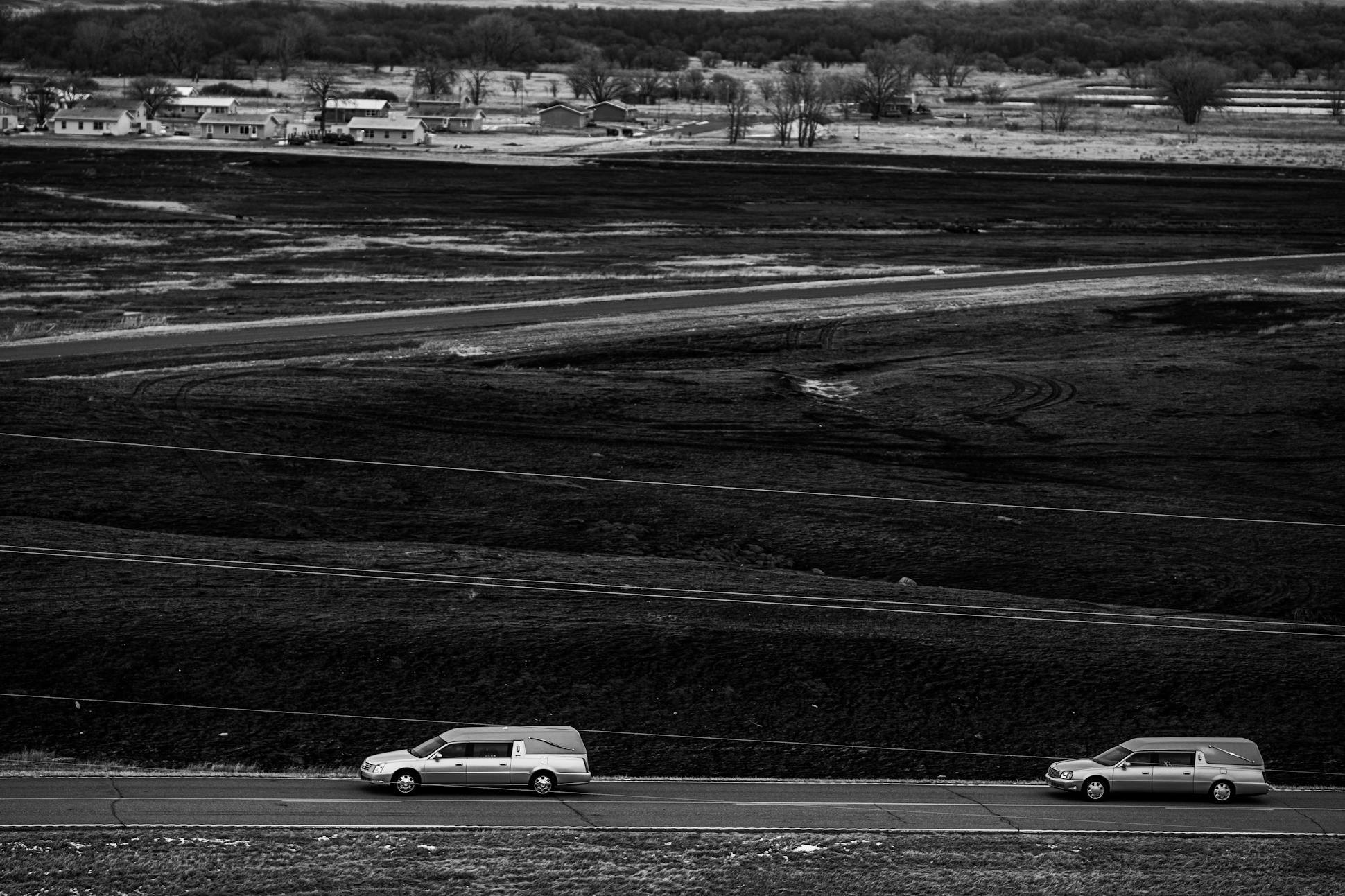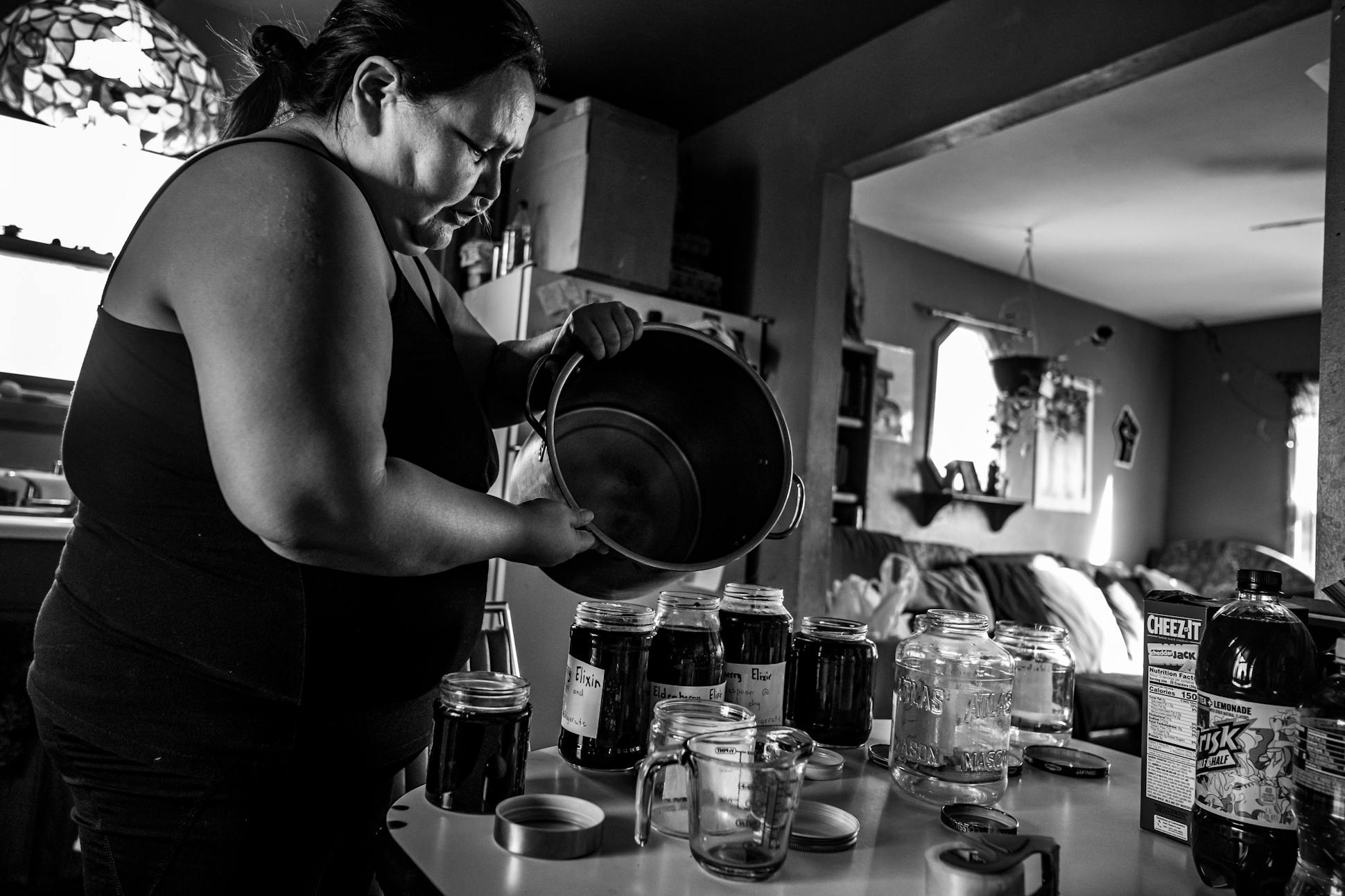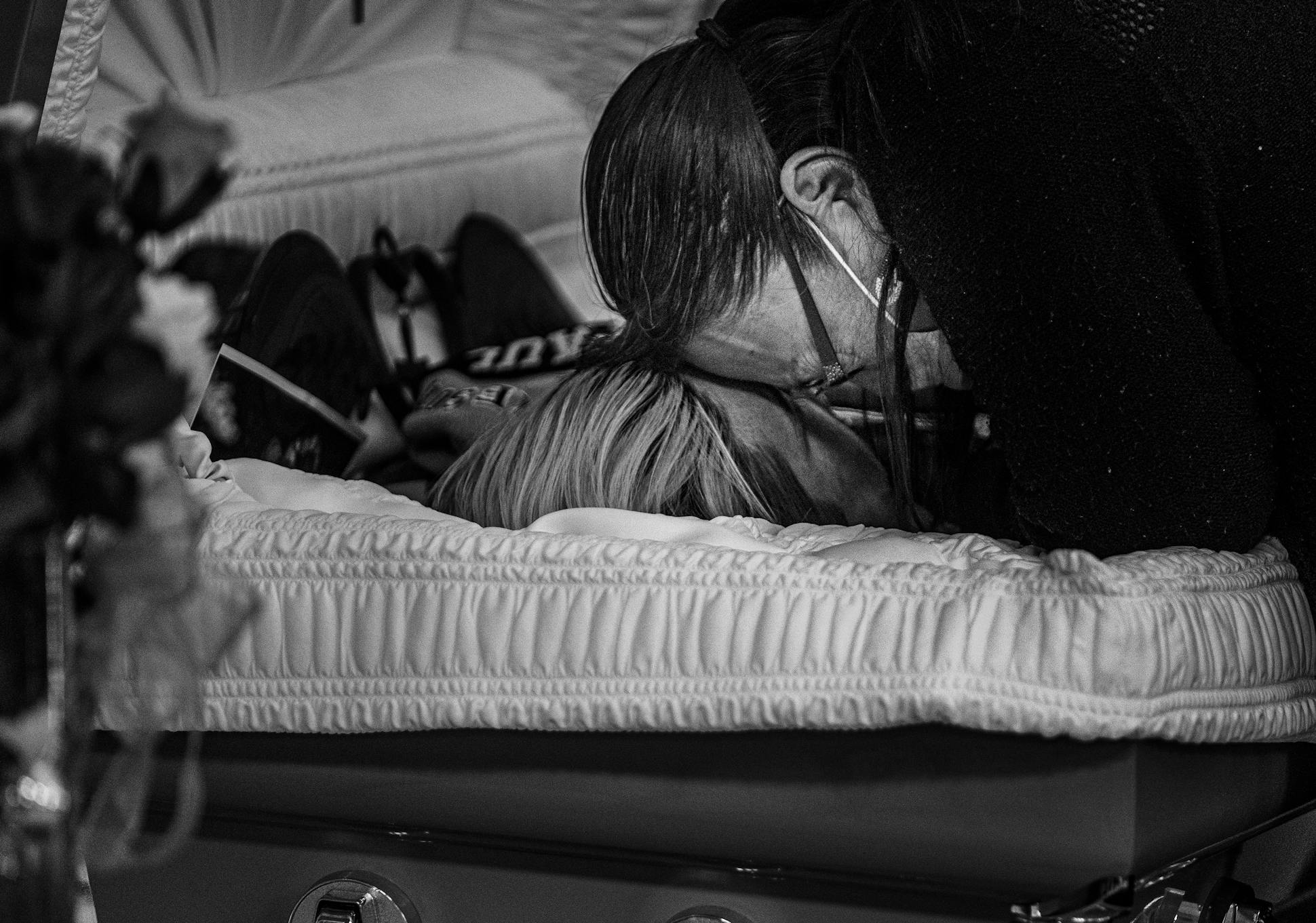WAKPALA, S.D. – At moments when she is overcome with grief, Anna Mellette quietly unlocks the door to the bedroom that once belonged to her beloved son Jared, who was affectionately known as "Doy Doy" on the Standing Rock Indian Reservation where his family lives.
Mellette has kept the room untouched like a shrine since Jared, who was 24, died suddenly of the novel coronavirus in early December. Sometimes Mellette will press one of her son's checkered flannel shirts against her nose, and his scent will bring back vivid memories of him playing with his nephews and nieces on the reservation.
"I kept hoping and praying that Doy Doy would get better and come home, but it never happened," Mellette said, sobbing.
For generations, the Lakota and Dakota people who live on Standing Rock in the Dakotas have been famously self-resilient and isolated from the hustle of the outside world. Many families still lack internet access or computers. Hospitals are distant, and an ambulance can take 90 minutes to arrive. Many homes rely on delivered propane for heat. And radio remains the main source of news — broadcast from a tribal radio station high on the windswept prairie.
But the qualities that have long made Standing Rock distinctive — the wide-open remoteness of its landscape and its strong tradition of close-knit familial ties — have also made this community of 8,000 particularly vulnerable to the highly infectious and deadly virus.
The 3,625-square-mile reservation, which avoided the worst of the pandemic during the spring and summer, has rapidly devolved into one of the most alarming hot zones in the Midwest. Coronavirus infections at Standing Rock have surged more than 400% since the summer, from 106 cases in early August to 550 cases in late November, according to data from the tribe.
Burial ceremonies have become an almost daily ritual at the hilltop cemeteries on the reservation. Many families have had two, three or more relatives die from the virus. COVID-related deaths are now so frequent that the Teton Times, a local newspaper, is running five pages of obituaries a week.
Crowded housing conditions and poor access to health care have left many families feeling viscerally unsafe as the virus has tightened its clench on the small towns that lie low in the reservation's deep river valleys.
"Never did I imagine that this virus would affect us so deeply," said Virgil Taken Alive, a Lakota elder who has lost three close relatives, including a brother, to the virus.
Across the nation, Indigenous communities — from the Navajo Nation in the Southwest to the Red Lake Band of Chippewa in northern Minnesota — have been more prone to contract the respiratory disease because of crowded housing, underfunded health systems and more chronic health problems. American Indian and Alaskan Native people have been nearly twice as likely to die of COVID-19 than whites, according to a recent study by the Centers for Disease Control and Prevention (CDC).
The death rates among some tribes are among the highest in the country. In South Dakota, American Indians account for 14% of all coronavirus cases, but they represent just 1% of the overall population.
The Standing Rock Sioux Tribe and its vast territory, which straddles both Dakotas, have long held a special place among the Indigenous peoples of North America. It was where Sitting Bull, the great Hunkpapa Lakota chief, was murdered when he refused to sell or lease the land to the U.S. government.
In 2016, Standing Rock drew global attention to the Indigenous struggle for water rights and recognition when thousands of people descended on a camp near the reservation to protest the Dakota Access Pipeline.
For much of the pandemic, Standing Rock appeared to fare better than the rest of the region. Unlike much of South Dakota, whose governor has refused to encourage people to wear masks or socially distance, safety measures are taken seriously on the reservation. Mask-wearing is mandated and quarantines are strictly enforced.
The tribe closely tracks every member infected with the virus, and deploys security monitors to keep round-the-clock surveillance over households in quarantine.
To encourage people to stay at home, roving teams of "food runners" have been delivering large boxes of food twice a week to households on the reservation.
On a recent afternoon, the teams could be seen cruising through the reservation towns of Little Eagle and Bullhead, honking and running from door to door with boxes of fresh vegetables and meat. No home was missed as dogs chased the trucks through the streets. The regular food deliveries have been a critical life support, enabling families to avoid perilous trips to stores off the reservation, where mask-wearing is less common.
"Kinship is how we survived as a people. It's a way of life," said Avis Little Eagle, a councilwoman for the Standing Rock tribe and editor of the Teton Times. "You step up when your relatives are suffering."
But tribal health officials noticed a troubling surge following the summer months, when families began spending more time indoors. By Christmas, at least 22 tribal members had died from the respiratory disease and 30 people were actively battling the virus, according to the tribe's data.
The rising death toll has stoked divisions within the community over the tribe's pandemic response, which some on the reservation contend has not been aggressive enough. This spring, both the nearby Cheyenne River Sioux and Oglala Sioux tribes installed multiple traffic checkpoints on roads leading into their sovereign lands, strictly limiting access to tribal members.
But Standing Rock has stayed open, and non-Native visitors continue to pour into its two casinos on the reservation. "Some of my people have no ears," said Virgil Taken Alive, repeating the sentence in his native Lakota language.
There are reasons the coronavirus has been especially lethal in this community. It is common for multiple generations of the same family — including aunts, uncles and grandparents — to live under the same roof, making social distancing impossible. Housing is so scarce that a dozen or more relatives live in many of the two-bedroom mobile homes that dot the reservation. Older citizens of Standing Rock also tend to suffer from serious health conditions, such as diabetes and heart disease, that make them more susceptible to dying from the disease.
Sharon Eagle, the matriarch of a large Lakota family, watched nervously as three of her grandchildren chased each other in circles around her mobile home on the reservation. She requires the children to wear masks outside, knowing the respiratory disease would be impossible to contain if it infiltrated her crowded home.
Fourteen members of the Eagle family, including a 1-year-old, share the three-bedroom house.
For months, the Eagle family has been afraid to venture beyond the reservation and has scraped by with donated food. But now, even their small neighborhood feels unsafe. A 16-year-old girl who lives across the street, and who often played with the Eagle children, fell into a coma after contracting the virus at a volleyball tournament, she said.
"Our people are scared," said Eagle, 66, who prays for her family's safety beneath a wall adorned with wooden crosses and Lakota necklaces. "The sorrow never ends, because every day you hear about another relative who is sick or who has died."
Jonathan Edwards, a retired emergency medical technician from McLaughlin, S.D., said some tribal members are dying unnecessarily from COVID-19 because the reservation's few ambulances serve an area larger than Delaware and Rhode Island combined; and virus-stricken residents suffering from respiratory distress are not getting to the hospital quickly enough.
Edwards, who runs a nonprofit dedicated to increasing life expectancy on the reservation, has been delivering masks and other medical supplies from a rickety old van that he starts by turning a screwdriver in the ignition.
"We have systemic inequities here that existed long before the pandemic — and have been magnified by COVID," Edwards said.
The recent deaths of several of Standing Rock's most respected elders have amplified the communal grief that has enveloped this community.
On Dec. 14, Jesse "Jay" Taken Alive, considered among the greatest Lakota leaders since Sitting Bull, died of complications related to COVID-19 — about a month after his wife, Cheryl Taken Alive, succumbed to the virus.
A former chairman of the tribe, Jesse Taken Alive was a relentless advocate for upholding Standing Rock's treaty rights and preserving Lakota culture. His advocacy led Congress to pass a bill in 1990 that outlines how Native American remains and artifacts are to be returned to ancestral sites.
Taken Alive was also among an older generation of tribal members who spoke fluent Lakota and taught the language to young people on the reservation.
His death has reminded people on Standing Rock of the grave threat the pandemic poses to the tribe's cultural traditions. When the Moderna coronavirus vaccine finally arrived on the reservation before Christmas, priority was given to tribal members who are fluent in the Lakota language. "We are losing our national treasures," said Avis Little Eagle.
While the rising death toll has spurred feelings of despair, many Standing Rock members have found strength and solace in their traditions.
With the first light of dawn, Brandon Claymore arose and stepped out of a small camper parked amid the prairie grass near the powwow grounds at Fort Yates, N.D. A frigid wind was blowing and snow was already piling up against the icy windows of the camper where he has been confined since contracting the coronavirus in early December.
Claymore said he became sickened within a week after starting work at the Prairie Knights Casino and Resort in Fort Yates. Dressed in a jumpsuit, Claymore would empty the slot machines of their cash and sort the bills — a job that he now believes exposed him to the virus. "I always wore a mask but it didn't matter — COVID was on the money," he said.
Within days after he tested positive, the microscopic killer infected four other members of the crowded home where he lives with nine of his relatives. Fearing more would get sick, Claymore moved into one of several campers erected by the tribe to separate infected residents.
Despite its small size, the camper is equipped with a bed, indoor plumbing and a flat-screen television. "It gets pretty lonely out here, but I know the community is watching over me," Claymore said. "Generosity has always moved our people forward."
At the other end of the reservation, Waniya Locke, a Lakota language teacher and water rights activist, has been making jars of homemade elderberry syrup and other natural, immune-building remedies. Bags of herbs native to the region lay strewn about her cluttered living room overlooking the Missouri River.
She and a team of volunteers deliver the remedies to elders too sick or frail to venture out of their homes.
"The reality is the Lakota and Dakota people have been in a state of emergency for generations because of systemic oppression," Locke said as she stirred a fresh batch of elderberry syrup. "We already have the skills to survive."
One day this fall, Jared Mellette spoke to his mother of his dreams to one day attend college, get married and start a family of his own.
Just weeks later, he emerged from his bedroom looking fatigued and gasping for breath. Paramedics carried him out of his family's house on a stretcher — the last time that his mother saw her son alive.
Later he was flown to the University of Minnesota Medical Center in Minneapolis, where he died on Dec. 6 — the youngest person on the reservation to be claimed by the virus.
"I wish my brother was right along with me now, and we could have all those years back," said a grieving Kyle Mellette of Aberdeen, S.D. "I'm sure he would have made a great father."
Days before Christmas, the sound of women sobbing carried on the morning breeze as tribal members gathered outside a school gym in Wakpala, S.D., for Jared Mellette's funeral.
One by one, men and women dressed in red-and-black shirts — in memory of Mellette's favorite colors — approached the open casket as mourners sang hymns in Lakota. His mother leaned over her son's body, stroked his long dark hair and whispered "I love you Doy Doy" over and over.
Then she gently pressed her face against her son's forehead and kissed him one last time.


